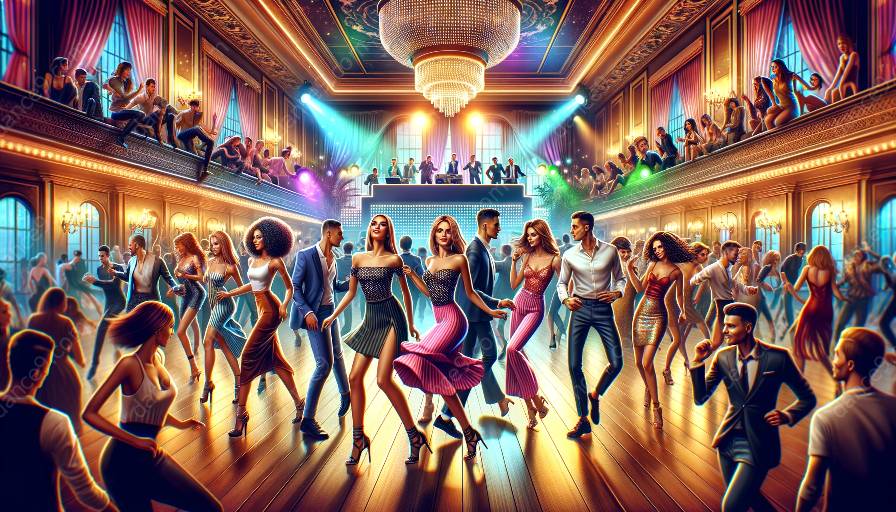Dancehall is a vibrant and energetic dance culture that has a rich history and a significant influence on modern dance classes. However, with its popularity comes a number of cultural stereotypes that have been associated with it. In this discussion, we will explore the common misconceptions and truths about the cultural stereotypes linked to dancehall, and how they impact dance classes.
Understanding Dancehall
Before delving into the stereotypes, it's important to understand what dancehall is. Originating in Jamaica, dancehall is a genre of popular music characterized by a blend of reggae and electronic music. Dancehall music emerged in the late 1970s, and the dance moves associated with it became a vital element of the culture.
Today, dancehall is not only a genre of music and dance but also a lifestyle and a form of expression that has spread across the globe.
Cultural Stereotypes
Like many other cultural phenomena, dancehall has not been immune to stereotypes. Some of the most common stereotypes associated with dancehall include the perception that it promotes violence, hypersexuality, and delinquent behavior.
This stereotype often paints dancehall as an aggressive and sexually explicit dance form, ignoring the rich cultural and historical significance of the genre. These misconceptions have sometimes led to the stigmatization of dancehall dancers and the dance form itself.
Violence
One of the prevalent stereotypes associated with dancehall is that it promotes violence. This misconception stems from the aggressive and energetic movements often seen in dancehall performances, which some mistakenly associate with physical confrontation.
While dancehall does feature intense and powerful movements, these are artistic expressions and have no inherent connection to violence. In fact, many dancehall practitioners view the dance form as a means of channeling and releasing energy in a positive and constructive manner.
Hypersexuality
Another common stereotype is the belief that dancehall encourages hypersexuality. This misconception arises from the sensual and suggestive nature of some dancehall movements, leading to the misperception that the culture itself is focused solely on sexual expression.
However, it is important to recognize that dancehall is about freedom of expression and not merely rooted in sexuality. The movements and gestures are often celebratory and reflect emotions such as joy, empowerment, and unity.
Delinquent Behavior
Some stereotypes portray dancehall participants as engaging in delinquent behavior, linking the dance form to criminal activity or social disobedience. This stereotype overlooks the positive impact of dancehall on the community and its role in providing an outlet for artistic expression and social connection.
In reality, many dancers and enthusiasts are actively involved in community-building activities, using dancehall as a tool for empowerment and social change.
Impact on Dance Classes
These cultural stereotypes have had implications for the perception and acceptance of dancehall within the context of formal dance classes. Some instructors and dance schools may be hesitant to incorporate dancehall due to these misconceptions, fearing that it may not align with their values or the expectations of their students and their families.
However, it is essential to challenge these stereotypes and recognize the valuable cultural contribution that dancehall brings to the world of dance. By acknowledging the historical, social, and artistic significance of dancehall, dance classes can embrace this dynamic and engaging dance form, providing students with a holistic dance education that reflects the diversity of global dance cultures.
Embracing Diversity
Understanding and debunking cultural stereotypes associated with dancehall is crucial for promoting inclusivity and diversity within dance classes. By recognizing the true essence of dancehall and appreciating its cultural significance, dance instructors can create an environment that celebrates diverse dance forms and fosters a sense of respect and understanding among students.
Ultimately, by embracing dancehall and educating others about its rich cultural heritage, we can break down stereotypes and create a more inclusive and vibrant dance community.
Conclusion
Dancehall is a powerful and expressive dance culture that has been overshadowed by cultural stereotypes. By shedding light on the truth behind these misconceptions, we can pave the way for a more inclusive and diverse dance landscape.
As dance classes continue to evolve and expand, it is essential to embrace the diversity of dance forms and challenge the stereotypes that limit the appreciation of cultural richness. Through education and understanding, we can celebrate the beauty of dancehall and its impact on the art of dance.













































































